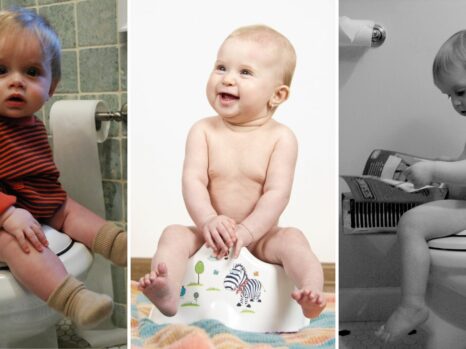Are you curious about the potential impact of having larger nipples on breastfeeding? If you’re considering breastfeeding and happen to have notably large nipples, it’s essential to be well-prepared since it might pose some challenges for the baby to latch on properly.
This, in turn, could potentially lead to nipple soreness. Generally speaking, a mother’s nipples should not be excessively large to hinder breastfeeding.
Breastfeeding Guidance for Women with Large Nipples
When dealing with significantly larger nipples, understanding the correct approach to breastfeeding is crucial. Rest assured that your baby possesses the innate ability to feed, unless they encounter specific sucking difficulties that might complicate matters.
So, what is the appropriate method for breastfeeding with large nipples?
It is vital to adhere to proper techniques to ensure a successful and comfortable feeding experience for both you and your baby.
To support your breast during breastfeeding, employ a “U” hold. Position your thumb or forefinger on the upper side of the breast, while the remaining fingers rest underneath. Be mindful to avoid touching the areola. This technique proves particularly effective for women with large, puffy nipples and ample breast tissue.
For mothers with large nipples facing challenges during breastfeeding, it’s valuable to explore different strategies. Here are some helpful suggestions:
- Lying down position
Some mothers find it beneficial to breastfeed while lying down, as it can alleviate difficulties associated with large nipples. The football hold or lying down position can be effective in these cases.
- Nipple care
If you experience soreness while breastfeeding, try expressing a small amount of milk after feeding and gently spreading it over the areola and nipple. Immediate relief for cracked nipples can be obtained through this.
Additionally, using a pure lanolin cream can be effective in remedying sore nipples caused by breastfeeding.
- Nipple compression
Women with very large or long nipples may find it helpful to gently squish the nipple down, making it easier for the baby to latch on during breastfeeding.
- Nipple shield
If you’re struggling to get your baby to latch on, consider using a nipple shield. This has proven helpful for certain mothers in facilitating breastfeeding.
- Pumping exclusively
If you decide to stop breastfeeding but still want to provide breast milk to your baby, you can continue by exclusively pumping.
- Seeking guidance
Remember that patience and knowledge are crucial. Seek advice from experienced individuals or consult with lactation specialists for additional support and information specific to breastfeeding with large nipples.
By approaching breastfeeding with patience and seeking guidance, you can enhance your breastfeeding experience and find it both successful and enjoyable.
Breastfeeding with Large Nipples: Tips and Strategies
Having large nipples does not typically hinder successful breastfeeding. However, it is essential to ensure your baby latches on correctly, taking in the entire nipple and part of the surrounding areola.
When the baby only latches onto the nipple, it can result in inadequate milk extraction, sore nipples, and a painful breastfeeding experience for you.
Most healthy full-term babies can latch onto large nipples without difficulty. Nevertheless, if you have a premature baby or one with a small mouth, they might require some assistance.
Here are some strategies you can try if your baby is having difficulty latching or if you experience nipple soreness:
- Nipple shield: If your baby is struggling to latch or you have a premature baby, a nipple shield can be beneficial. This device helps position the nipple and creates suction. However, it’s important to use a nipple shield under the guidance of a doctor or breastfeeding specialist to avoid potential complications.
- Consult a lactation consultant: If you have concerns about your baby latching onto your larger nipples, consider seeking guidance from a lactation consultant. They can provide valuable advice on breastfeeding positions that are better suited for larger nipples.
- Football hold position: The football hold is often advantageous for parents with large nipples. It offers a better view of both your nipple and your baby’s mouth as they latch on.
Remember, with patience, support, and the right techniques, you can have a successful breastfeeding experience, even with larger nipples.
Can Breast Size, Breast Shape, and Nipple Shape Impact Breastfeeding Ability?
The size and shape of your breasts do not hinder your ability to breastfeed. Instead, focus on achieving a proper latch and seek information through classes or consultations with professionals.
As a new mom, it’s common to have numerous questions. It’s important to avoid blaming yourself or attributing feeding difficulties to your body shape. Breastfeeding is a natural process, and each woman’s experience can differ. Some find it easy, while others face challenges.
Keep in mind that as your baby grows, any concerns related to larger nipples tend to resolve naturally. Your baby’s mouth will also develop, accommodating their needs better over time.
Initially, you may encounter some challenges, but with the right latch and support, breastfeeding can become easier. Exploring the option of combination feeding may also be worth considering.
Challenges of Breastfeeding: When Your Baby Refuses to Nurse
Breastfeeding can present various challenges, and as a new mom, it’s natural to feel overwhelmed. If your baby refuses to breastfeed, it’s important to remember that it’s not your fault, and there are strategies to explore.
- Practice patience and perseverance: Breastfeeding requires time, practice, and patience. Keep trying to nurse your baby, offering the breast during calm moments or when they show signs of hunger.
- Try expressing milk: If direct breastfeeding proves difficult, consider hand expressing milk or using a breast pump to maintain your milk supply. You can then feed the expressed milk to your baby using suitable milk bottles like Philips Avent Bottles or Brown bottles designed for newborns.
- Seek professional guidance: If you’re encountering challenges, don’t hesitate to consult your doctor or healthcare provider for guidance. They can provide valuable advice, assess any underlying issues, and suggest additional strategies or resources to support you and your baby.
Remember, every breastfeeding journey is unique, and seeking support from healthcare professionals can make a significant difference. Stay positive, be patient with yourself and your baby, and keep exploring different techniques until you find what works best for both of you.
What is the best breastfeeding position for large nipples?
Nourishing your baby through breastfeeding is a wonderful and innate approach. However, if you have larger nipples, you may be wondering about the best positions that will optimize your breastfeeding experience.
Below, we will explore various breastfeeding positions that can provide comfort, ensure a proper latch, and promote successful nursing for mothers with larger nipples.
- The Cradle Hold
The cradle hold is a classic breastfeeding position that can work well for women with larger nipples. To achieve this position, cradle your baby in your arms with their head resting in the crook of your elbow.
Align your baby’s body with yours, tummy to tummy, and bring them close to your breast. Use a nursing pillow or cushions to support your arm and bring your baby to the breast, allowing them to latch on.
This position allows you to have good control over the latch and ensures your baby can take in both the nipple and surrounding areola.
- The Football Hold
The football hold, also known as the clutch hold, is another beneficial position for mothers with larger nipples. In this position, position your baby’s body under your arm, with their legs tucked under your arm and their head supported by your hand.
Use a nursing pillow or cushions to bring your baby’s mouth to your breast from the side. This position provides excellent visibility of your nipple and allows you to guide your baby’s latch more easily.
- Side-Lying Position
The side-lying position is not only comfortable for mothers but can also be beneficial for those with larger nipples. Lie on your side with a pillow supporting your head, and position your baby facing you.
Bring your baby close to your breast, ensuring their mouth is aligned with your nipple. This position allows gravity to aid in the latch and can be particularly helpful during nighttime feedings or when you need to rest.
- The Laid-Back or Biological Nurturing Position
The laid-back position, also known as biological nurturing, is a relaxed and instinctive approach to breastfeeding. Find a comfortable semi-reclined position, leaning back slightly, and support yourself with pillows.
Place your baby on your chest, with their body facing yours, and allow them to find their way to the breast. This position utilizes your baby’s natural instincts to crawl and latch onto the breast, and it can be effective for women with larger nipples.
Additional Tips:
- Experiment and Find What Works for You
Remember that every mother-baby dyad is unique, and what works for one may not work for another. Feel free to experiment with different positions and find the one that feels most comfortable and effective for you and your baby.
How can you make your nipples smaller for breastfeeding?
If you are seeking ways to make your nipples smaller for a more comfortable breastfeeding experience, here are some tips to consider.
- Proper Latch Technique
The key to comfortable breastfeeding lies in achieving a proper latch. Ensure that your baby takes in not just the nipple but also a significant portion of the surrounding areola into their mouth. This helps distribute the pressure more evenly and reduces strain on the nipple.
Seek guidance from a lactation consultant or breastfeeding specialist to ensure your baby is latching correctly.
- Use Nipple Shields
Nipple shields are silicone or rubber covers that can be placed over the nipple during breastfeeding. They can help provide a barrier between your nipple and your baby’s mouth, making it more comfortable for you. Consult with a healthcare professional to determine if nipple shields are suitable for you and your baby and to ensure proper usage.
- Nipple Preparation
Before breastfeeding, gently massage your nipples and areolas to stimulate blood flow and promote flexibility. This can help prepare the nipple for nursing and make it more pliable for your baby’s latch.
- Nipple Care
Keeping your nipples moisturized and healthy is essential. Use lanolin-based nipple creams or ointments after each feeding to soothe and protect your nipples. These products can help alleviate any discomfort caused by breastfeeding and promote healing if there are any cracks or soreness.
Final Words
Breastfeeding with large nipples is a normal and natural process that can be successfully accomplished with proper support and guidance. While women with large nipples may encounter some initial challenges, such as latching difficulties or nipple soreness, there are several techniques and resources available to overcome these obstacles.
Mothers with large nipples may find it helpful to consult with a lactation consultant or seek guidance from a healthcare professional who can provide personalized support and address any concerns or difficulties they may encounter.
These experts can offer valuable advice, demonstrate proper latching techniques, and provide reassurance to mothers that they can successfully breastfeed their babies with large nipples.














